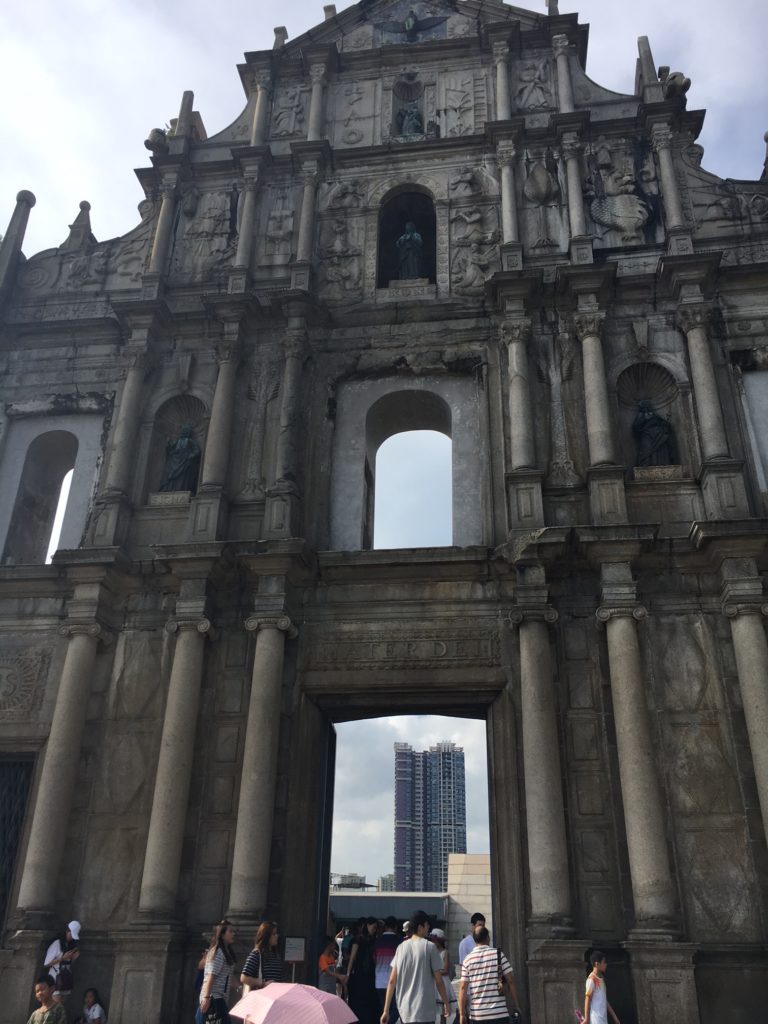
Every Halloween I write a blog post about the supernatural or the mysterious, from a book review regarding a Russian mystery, to a description of the best podcasts to make you afraid. Last summer I did fieldwork on public policy and infectious disease in southeastern China, during which I traveled to Hong Kong, Macau and Shenzhen. I was delighted by the ancient temples in Hong Kong, and fascinated by the enduring strength of traditional religion in the region. In fact, I was very disappointed to find that I was leaving Hong Kong one day before the “Festival of Hungry Ghosts” began on August 25th. But I was surprised to find that even urban and energetic Shenzhen is haunted by its past. This is surprising since the city has a population of perhaps 12 million people today, while it had a population of at most 30,000 in 1979. When I visited the Shenzhen Museum (which is both free and excellent, if you are interested in urban development) they had pictures of neighborhoods in the 1980s that were little more than fields. These pictures were juxtaposed with photos of Shenzhen currently, where developers compete to build the highest skyscraper. There can have been few places where development has so quickly erased the past. The city is filled with sweeping avenues, towering sky-scrapers, world-class architecture and graceful parks. It was painful to contrast the new public works in Shenzhen with the sometimes antiquated state of subways, bridges and roads in the United States. Yet even here, the city is haunted by disturbing memories.
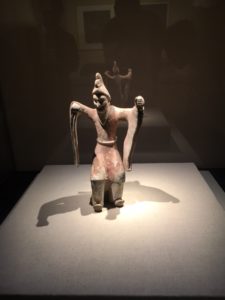
While I was traveling in the city I had a guide. While in the central part of the city -not far from the Shenzhen Museum- they pointed out to me some large, pink buildings, which look like high-rise residences. I don’t know if what my guide said was true or just popular belief, but they told me that the location of these buildings had historically been a police station at which criminals had been executed. My guide said that when the developer wanted to build on the location, they were concerned that people would be afraid of the angry spirits of the departed. So they designed the shape of the buildings to incorporate a pyramid, and made sure that the buildings were pink, which frightens away spirits. As a coda to this story, after this visit I went to the Shenzhen museum, which had an exhibit on the ground floor of archaeological remains from northern Shanxi province. During the visit I saw the sculptures of two tomb guardians, which looked like a cross between dogs and lions, with blue eyes and long fangs. Even after this length of time some of the color lingered on the stone. And what struck me was that the faces were painted bright pink, which my guide told me had been done to scare away evildoers. I don’t remember what dynasty had been in power when that tomb had been constructed. But it had perhaps been more than a millennia since some unknown artists had chosen bright pink to protect the tomb’s inhabitants, just as a modern architect had chosen pink to reassure the residents of modern buildings in Shenzhen. You can find a slightly different version of this story about the building told by Bailey Hu here in “That’s” magazine from Shenzhen. You can also find more about supernatural Shenzhen and China in that regular column.
In Hong Kong I also saw a skyscraper that had been designed with a hole in the middle to allow a dragon to fly from the mountain to the sea, according to the principles of Feng Shui. What is remarkable to me is that supposedly there is more than one such skyscraper in the city. I think that the story behind these buildings shows the power of the past and popular memory. No modern how many bullet trains are built, skyscrapers raised, or gorgeous museums designed, in the end any city is defined by its people. Families and cities have long memories. For this reason, I like the picture of Macau at the top of this blog post, through which one can view a modern building through the ruins of a seventeenth century Church. Even in a city marked by immense casinos, the past isn’t forgotten. Every generation uses its history it as a lens through which to view its world, based on not only its beliefs but also its fears.
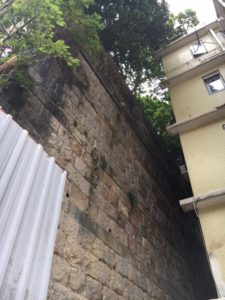
Few memories in China are as powerful as that of the Sino-Japanese War of 1937 to 1945. In December 1941 the Japanese successfully invaded Hong Kong. During the occupation, according to legend, they used a building on 55 Ship Street in Wan Chai as either a mortuary, or as a place for comfort woman, a euphemism for sexual slavery. The place is now known as the Wan Chai haunted house or Nam Koo Terrace (南固臺). The location isn’t easy to find. I wandered up a steep street (more of an alley now) until I arrived at an immense construction site. To one side, past a corrugated metal wall that set off the worksite, I could see the base of the property, which is said to be haunted by the ghosts of the women who suffered there. Just after noon on a sweltering Hong Kong summer day, it was hard to stare at the grey stone wall and feel any menace. Just a little down the street there was an upscale wine bar and restaurant. But in local folklore people say that they hear the screams of comfort woman at this place, and see flames.
According to one press account, a group of teenage boys and girls stayed in the house one night in 2003. This was not their first visit to haunted locations. They had formed a ghost haunting squad, and visited other allegedly haunted places, including a former mental hospital and a secondary school. At the house the teens -some of whom were 14- believed that they heard ghosts and fled in a panic. Apart from a banged nose, none of the teenagers seems to have suffered any serious physical injury in the rush out of the house, but they were hysterical when they burst out onto the street. The police were summoned, and they decided that they needed an ambulance. The neighbors misunderstood the confusion and thought that the teens were fighting the police, so they called for reinforcements. A large number of police soon arrived. Three of the teens were tied up and taken away in an ambulance. At the hospital the doctors tested the teens’ blood and urine but found nothing. Two teens quickly left the hospital, but one chose to remain. One of the teens told the press that they would still explore haunted locations, but they would take a break for while.
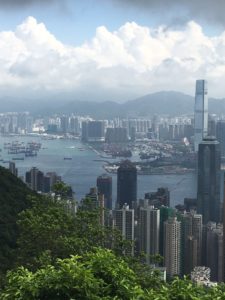
The story is in Chinese (I needed to cheat and use Google Translate to read it), but you can find the original reporting in the Oriental Daily here. The article provides a detailed account from the teens’ perspective of what happened in what they called the Red House, including a beckoning spirit and strange voices. There are also some pictures of two teenagers (with their faces partially obscured) in distress after leaving the building, with someone trying to help them. You can also watch a brief video about this (in English) by tour guide Maria Kwok on Youtube. The teens believed that the female figure they saw beckoning to them was calling on them to take her place. The video is very creepy, and has a brief sequel about an area that was an execution ground in Wan Chai during the war.
As an aside, there is also a brief video about a hike that a South China Morning Post reporter made to So Lo Pun, an abandoned and haunted village. This video is also in two parts, with the first video covering the hike to the village (which was blocked at one point by a bull), followed by their time in haunted village itself. The blood covered chair was disturbing, but I think that any local biologist could have identified the cry in the night.
The narrative about the Nam Koo Terrace -young people who stay in a haunted house on a dare, only to have one of them succumb to madness afterwards- is common in folklore in the West as well. So this story is likely to be remembered and retold for a long time. In Atlantic Canada, people are still telling the story of Esther Cox more than a century later.
The memory of the war remains, and sets this location apart even as the city modernizes. Indeed, stories about this war fill the local museums, such as the Hong Kong Museum of Coastal Defense. This outstanding and free museum (located about a fifteen minute walk from the Shau Kei Wan metro station, through some rather industrial areas) describes China’s long struggle to protect these coastal waters from pirates, British opium traders, and the Japanese. By the end of the museum, you can better understand China’s view of its national interests, and how painful some of these historical memories remain, particularly tied to Japanese atrocities. These stories haunt not only historical locations, but also international relations.
Still, for most of us ghost stories are more personal. Lawrence Osborne has a wonderful short story set in the
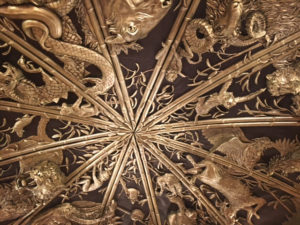
casinos of Macao, in which the main character has an encounter with an uncanny woman. The story is titled, Hungry Ghosts: Playing the numbers in Macau, and it evokes the art, affluence, decadence and isolation of Macau casinos. I spent part of a day walking through these casinos this summer -not gambling, but observing- and was stunned both by the wealth and the over-the-top art they contained. Osborne’s story has hungry ghosts and the supernatural, but (spoiler alert) it is more unsettling than frightening. For a non-literary scare, you can check out this (digitally manipulated) footage ostensibly taken in a Macau casino.
Do you want to read more about the mysterious for Halloween? You can read my book on an evil spirit in Indigenous narratives in the United States and Canada, titled Dangerous Spirits: the Windigo in Myth and History. If you do buy the book, whether you love it or hate it I would appreciate a review on Amazon or Goodreads. If you are looking for mystery novels, you can check out my
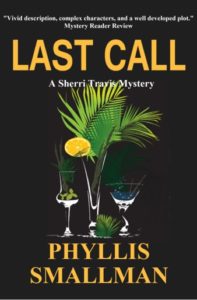
sister’s mystery, which is set in the Yukon: Ellen Wild, Strange Things Done. The book was the winner of the 2015 Unhanged Arthur Award for Best Unpublished First Crime Novel. Or you can read one of my mother’s mysteries, and get a free taste of her writing style by reading the short story, Bitty and the Naked Ladies from Amazon. You can find all of her novels here. For anyone who loves island life, I’d recommend Long Gone Man, which is set off the coast of Vancouver. The sequel, Beach Kill, is the winner of the gold medal in the Mystery/Thriller category of the 2017 Royal Palm Literary Awards by the Florida Writers Association.
Her most recent novel is Last Call, which is the most recent book in the Sherri Travis series. Here is a brief description of this mystery novel:
“Down in Key West, Sherri Travis and her best friend Marley, are looking for a little fun in the sun. Promising to be back for last call, Marley leaves the Rawhide Saloon with an Elvis impersonator. She doesn’t return. With Hurricane Alma turning toward Key West, and the police saying Marley must be gone for seventy-two hours before they start searching, Sherri hunts for Marley amidst the chaos of the evacuation.”
But this is a blog about the supernatural in China, so I’ll end with a book written during the Manchu dynasty, which has become part of the canon in Classical Chinese literature, Pu Songling’s, Strange Tales from a Chinese Studio (聊齋誌異). In some respects his short stories resemble those of Argentina’s Jorge Luis Borges, in that each narrative is typically very short, sometimes just a few paragraphs, but evokes an entire world. Each story tells of the eruption of some aspect of the supernatural into the world: inexplicable monsters, affectionate snakes, demon lovers, and above all, the fox spirits that also haunt Japanese tales. The stories evoke a culture and lost world of local elites, in which classically trained gentlemen took interest in all the affairs of their province. But the tales are also bawdy, and touch on topics from bestiality to the erotica of foxes. The author also seemed to have a fascination with people who ate strange foods, from excrement to snakes to stones. This is not a book for children.
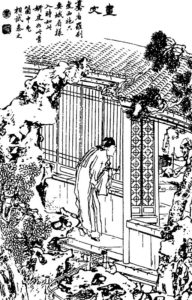
Although many stories are frightening, others touch on loyalty, love and filial devotion. Usually with a monster. Or a demon killing monk. It’s a Confucian gentleman’s version of the X-files, with a little added erotica. I particularly like the Penguin translation by John Minford, which is illustrated by an astounding number of Chinese line drawings from an early publication of the work. Minford’s translation is masterful, and will leave you thinking about the author’s style.
I wonder what the author’s family made of these writings. The book was never published during the author’s life. Instead, the book was likely first published in 1740 by Pu’s grandson. How did the family think about their stories, and what must they have thought of Pu himself? Were they amazed by his stylistic brilliance, or shocked by the erotica? The stories have influenced many later authors, and perhaps inspired folktales recorded by Lafcadio Hearn in Japan. It’s a good book for a rainy winter night, and a perfect choice for Halloween.
If you want to read more about the supernatural Asia, please read my post concerning Japanese books on the supernatural. Happy Halloween everyone, and if you are taking out children for trick-or-treating, please remember to give them glow sticks or a flashlight.
I also really want to thank the Confucius Institute at Portland State University, where I have been studying Mandarin with a great group of peers and excellent teacher, who have made learning fun. The Confucius Institute promotes Chinese and culture study through community outreach, and is an outstanding resource that Portland is lucky to have. Thank you to all my classmates for the laughter, especially the day we learned both to bargain and to order ice cream. 谢谢 万圣节快乐
PS If you want a blog post about a true mystery, please read about the strange ghost ship the Baltimore, which was found with only one person left alive aboard. That survivor most certainly was not whom she said she was.
